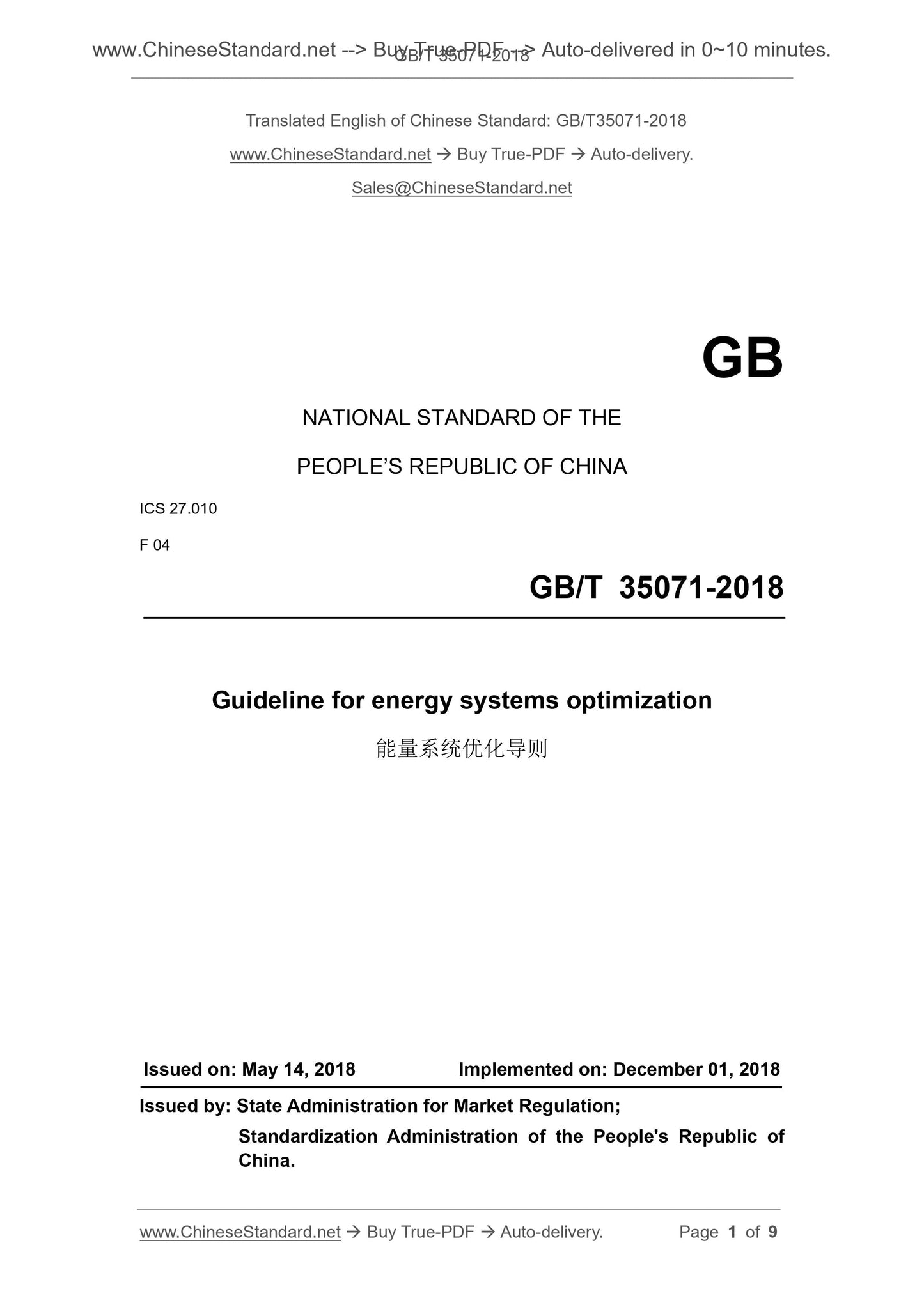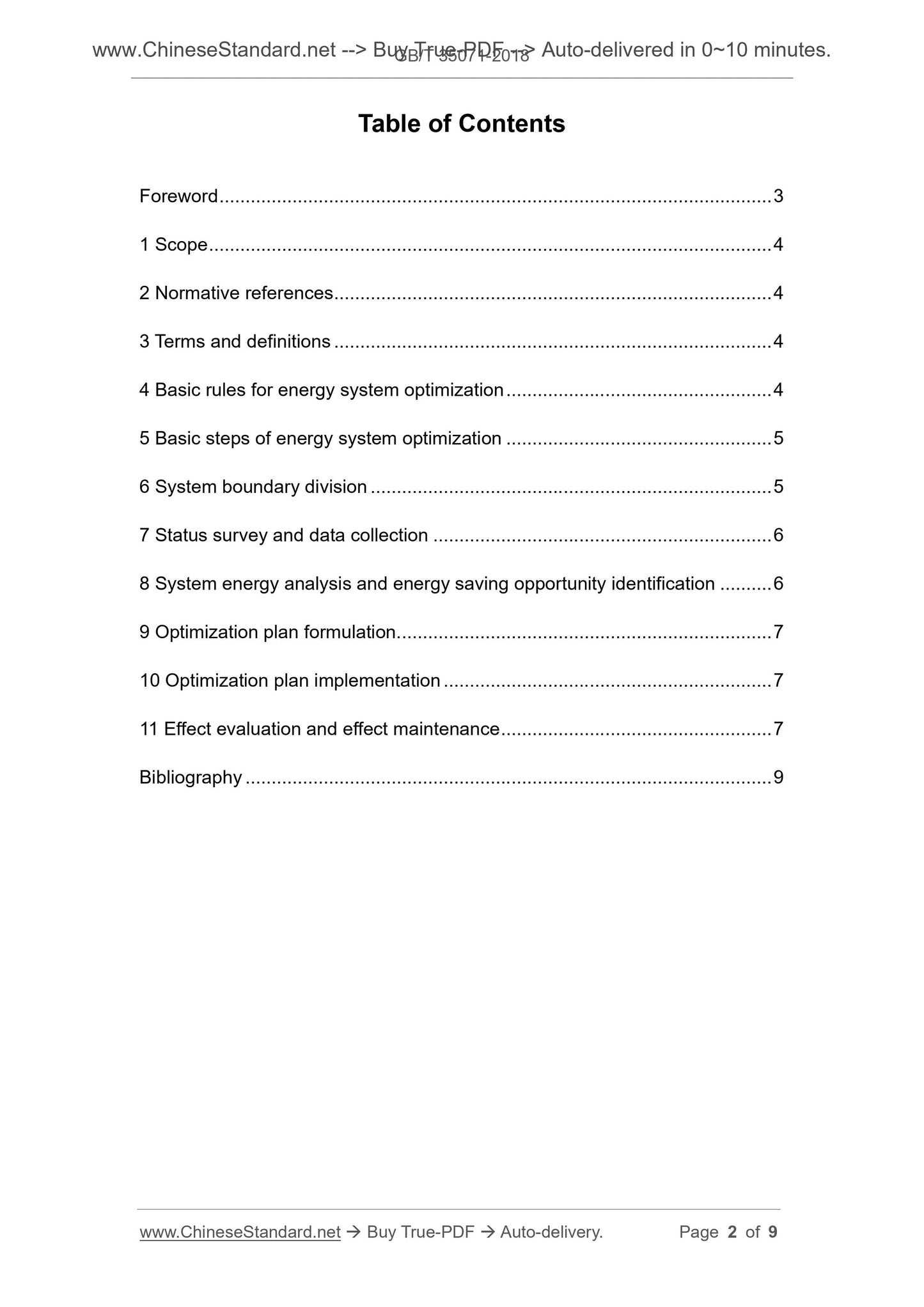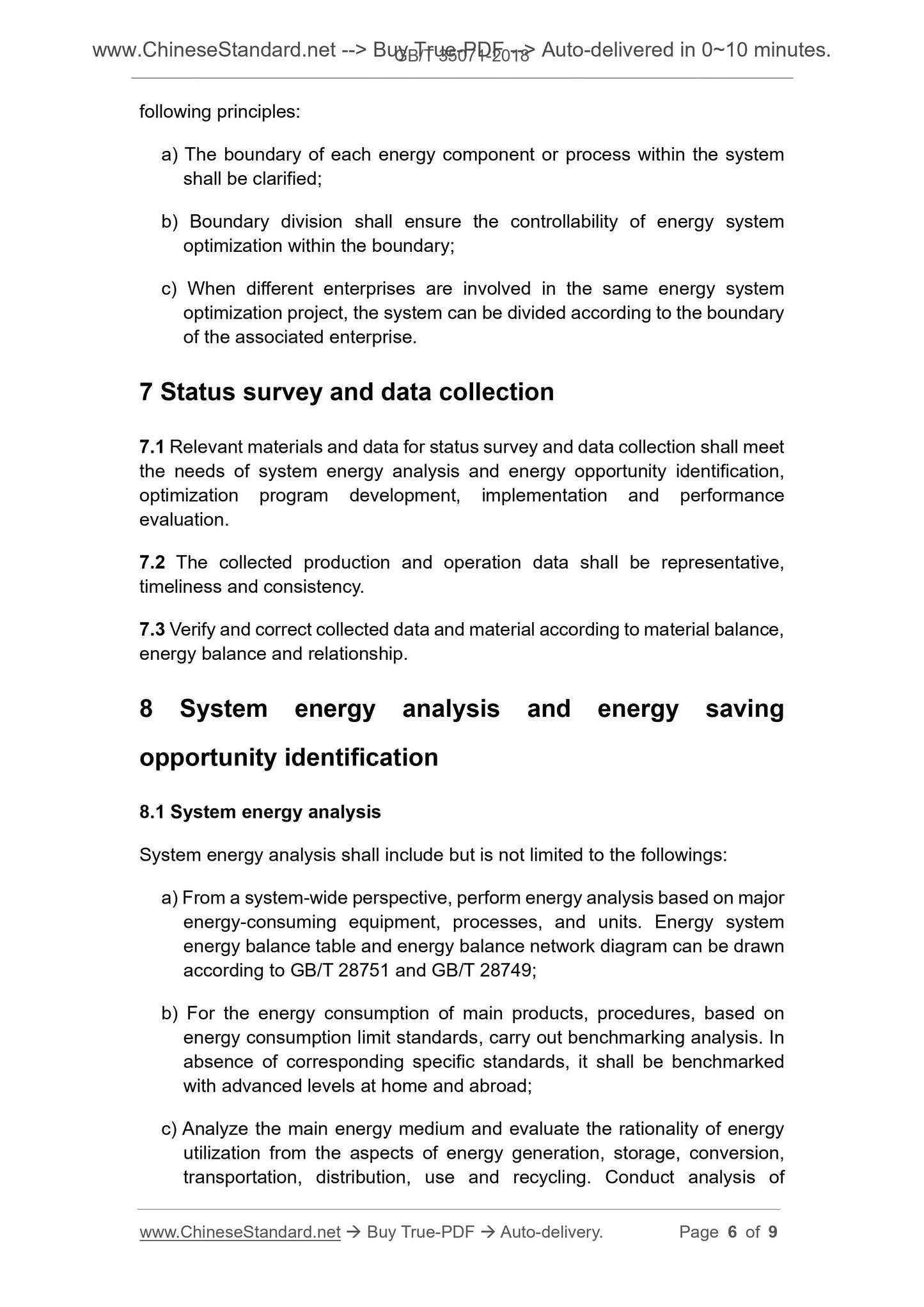1
/
of
4
www.ChineseStandard.us -- Field Test Asia Pte. Ltd.
GB/T 35071-2018 English PDF (GB/T35071-2018)
GB/T 35071-2018 English PDF (GB/T35071-2018)
Regular price
$110.00
Regular price
Sale price
$110.00
Unit price
/
per
Shipping calculated at checkout.
Couldn't load pickup availability
GB/T 35071-2018: Guideline for energy systems optimization
Delivery: 9 seconds. Download (and Email) true-PDF + Invoice.Get Quotation: Click GB/T 35071-2018 (Self-service in 1-minute)
Newer / historical versions: GB/T 35071-2018
Preview True-PDF
Scope
This Standard gives the basic principles, basic steps and content requirementsfor energy system optimization.
This Standard is applicable to energy system optimization for all industries and
energy users.
Basic Data
| Standard ID | GB/T 35071-2018 (GB/T35071-2018) |
| Description (Translated English) | Guideline for energy systems optimization |
| Sector / Industry | National Standard (Recommended) |
| Classification of Chinese Standard | F04 |
| Classification of International Standard | 27.010 |
| Word Count Estimation | 6,652 |
| Date of Issue | 2018-05-14 |
| Date of Implementation | 2018-12-01 |
| Regulation (derived from) | National Standards Announcement No. 6 of 2018 |
| Issuing agency(ies) | State Administration for Market Regulation, China National Standardization Administration |
Share







